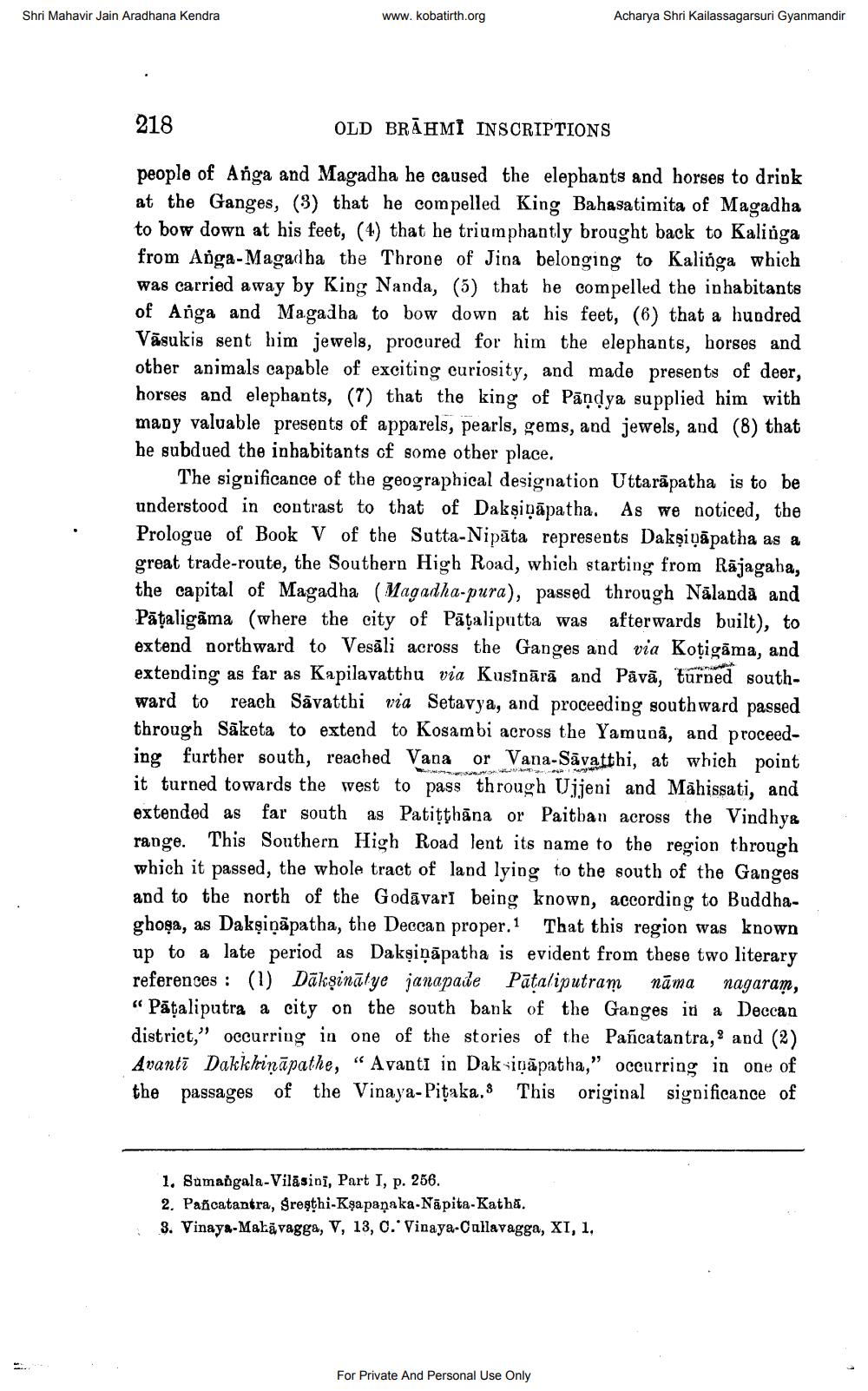________________
Shri Mahavir Jain Aradhana Kendra
www.kobatirth.org
Acharya Shri Kailassagarsuri Gyanmandir
218
OLD BRĀHMI INSCRIPTIONS
people of Anga and Magadha he caused the elephants and horses to drink at the Ganges, (3) that he compelled King Bahasatimita of Magadha to bow down at his feet, (4) that he triumphantly brought back to Kalinga from Anga-Magad ba the Throne of Jina belonging to Kalinga which was carried away by King Nanda, (5) that be compelled the inhabitants of Anga and Magadha to bow down at his feet, (6) that a hundred Vāsukis sent him jewels, procured for him the elephants, horses and other animals capable of exciting curiosity, and made presents of deer, horses and elephants, (7) that the king of Pāņdya supplied him with many valuable presents of apparels, pearls, gems, and jewels, and (8) that he subdued the inhabitants of some other place.
The significance of the geographical designation Uttarāpatha is to be understood in contrast to that of Daksimāpatha. As we noticed, the Prologue of Book V of the Sutta-Nipāta represents Dakşivāpatha as a great trade-route, the Southern High Road, which starting from Rājagaha, the capital of Magadha (Magadha-pura), passed through Nālanda and Pātaligāma (where the city of Pāțaliputta was afterwards built), to extend northward to Vesāli across the Ganges and via Kotigāma, and extending as far as Kapilavatthu via Kusinārā and Pavā, turned southward to reach Sāvatthi via Setavya, and proceeding southward passed through Sāketa to extend to Kosambi across the Yamuna, and proceeding further south, reached Vana or Vana-Sāvatthi, at which point it turned towards the west to pass through Ujjeni and Māhissati, and extended as far south as Patiţthāna or Paithan across the Vindhya range. This Southern High Road lent its name to the region through which it passed, the whole tract of land lying to the south of the Ganges and to the north of the Godāvarī being known, according to Buddhaghoşa, as Dakşiņāpatha, the Deccan proper.1 That this region was known up to a late period as Dakşiņāpatha is evident from these two literary references : (1) Dākşinātye janapałe Pūtaliputram nāma nagaram, “ Pătaliputra a city on the south bank of the Ganges in a Deccan district,” occurring in one of the stories of the Pañcatantra,' and () Avantī Dakkhiņāpathe, “ Avanti in Daksimāpatha," occurring in one of the passages of the Vinaya-Pitaka. This original significance of
1. Sumangala-Vilasini, Part I, p. 256. 2. Paficatantra, Sreşthi-Kșapaņaka-Nāpita-Katha. 3. Vinaya-Malāvagga, V, 13, 0.' Vinaya-Callavagga, XI, 1,
For Private And Personal Use Only




